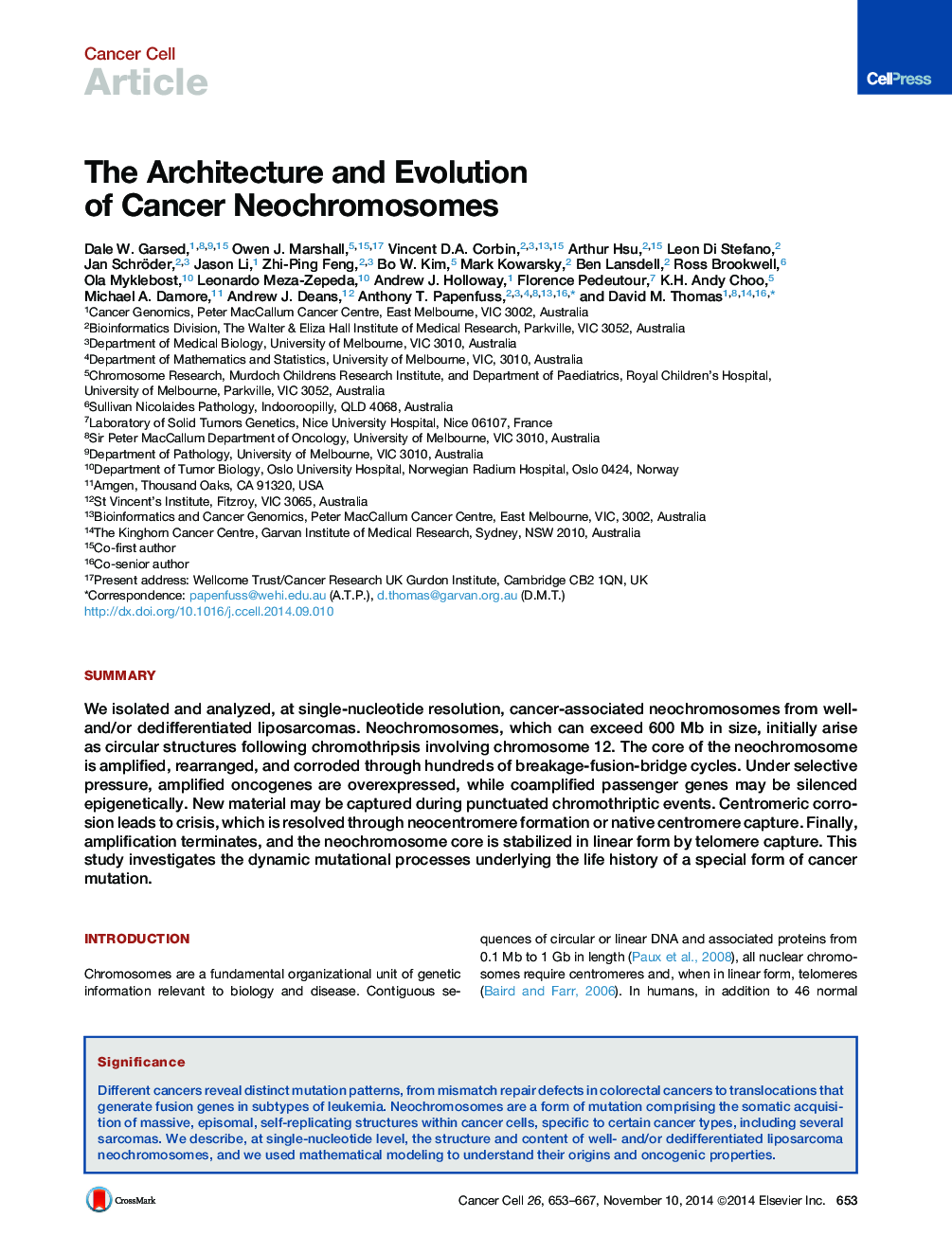| Article ID | Journal | Published Year | Pages | File Type |
|---|---|---|---|---|
| 2106834 | Cancer Cell | 2014 | 15 Pages |
•Next-generation genomic profiling is used to model the life cycle of neochromosomes•Chromothriptic fragmentation of chromosome 12q is an early event•Breakage-fusion-bridge cycles in the ring form lead to gene amplification•Neochromosomal telomeres and centromeres are either captured or generated de novo
SummaryWe isolated and analyzed, at single-nucleotide resolution, cancer-associated neochromosomes from well- and/or dedifferentiated liposarcomas. Neochromosomes, which can exceed 600 Mb in size, initially arise as circular structures following chromothripsis involving chromosome 12. The core of the neochromosome is amplified, rearranged, and corroded through hundreds of breakage-fusion-bridge cycles. Under selective pressure, amplified oncogenes are overexpressed, while coamplified passenger genes may be silenced epigenetically. New material may be captured during punctuated chromothriptic events. Centromeric corrosion leads to crisis, which is resolved through neocentromere formation or native centromere capture. Finally, amplification terminates, and the neochromosome core is stabilized in linear form by telomere capture. This study investigates the dynamic mutational processes underlying the life history of a special form of cancer mutation.
Graphical AbstractFigure optionsDownload full-size imageDownload high-quality image (290 K)Download as PowerPoint slide
